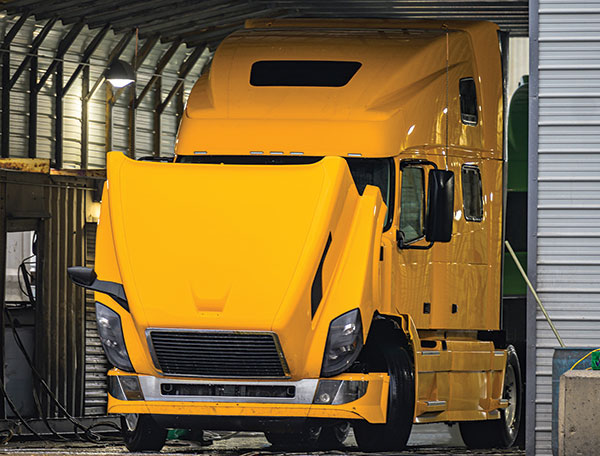Private Fleet: A key differentiator in service
Escalating fuel costs, competition for labor, and a world demanding sustainable operations is the reality all companies are faced with today. Private fleet owners that operate with a total cost of ownership mentality see this as another opportunity to lead and set the standards for the industry.
According to the ATA, more than half of U.S. operated fleets are private. Many companies that operate private fleets are doing so to meet new customer demands with the right level of service.
Today’s market dynamics require a great deal of agility to deliver the right value to both the customer and the business. This has been especially true over the last two years as logistics teams had to come up with creative solutions to deliver goods while adhering to strict health and wellness protocols.
For those with private fleets, this quick transition was made easier, as they only had a two-way relationship to manage through the change. For example, at the onset of the pandemic, companies had to deliver goods and services unattended, requiring a great deal of trust and transparency.
That proved to be even more challenging with a third-party operating the fleet, whereas companies with private fleets had an advantage with operations that were already part of the fabric of their businesses.
Accenture research found that customers are asking for “personalized, end-to-end logistics services—a demand that has only been amplified by events of the past 18 months.”
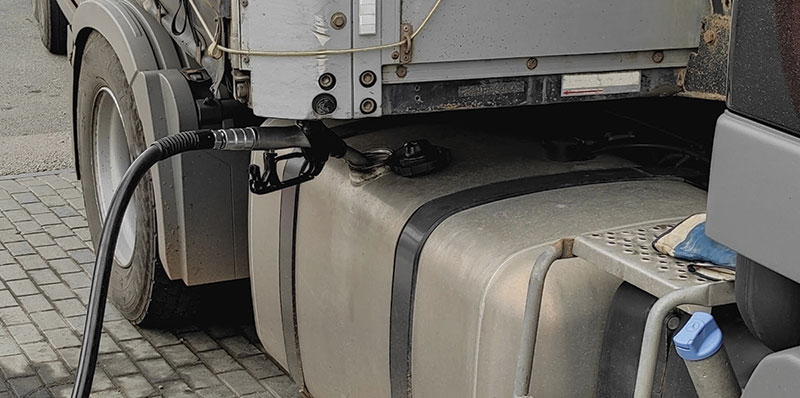
Customers are asking for four main things from logistics companies:
- end-to-end services;
- improved experiences;
- purpose aligned to their values; and
- proactive data-driven insights.
Private fleets are essentially “logistics companies” within a company, and as such, end-to-end services and experiences are areas that fleets can directly and positively affect. Getting this right can not only fortify and protect the business by enhancing the customer experience, service reliability and operational flexibility, but act as a platform to further expand services across the supply network.
Having a private fleet has an advantage with the end customer, as companies can quickly expand their portfolio of services to meet changing customer needs in near real-time.
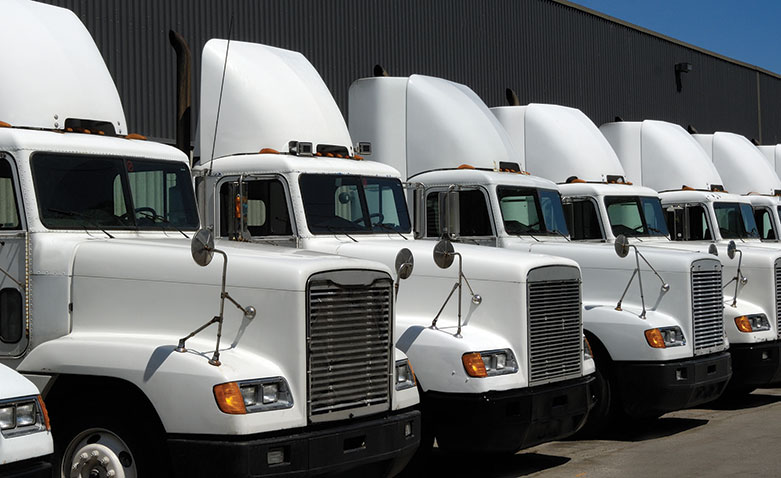
Keeping drivers happy
As more companies move toward the private fleet option, they will need to attract and retain a driver workforce. Delivery drivers are the lifeblood of the transportation industry. If nothing else, these past two years have emphasized the importance of a loyal and steadfast driver workforce to contend with accelerated demand and over-stretched supply chains.
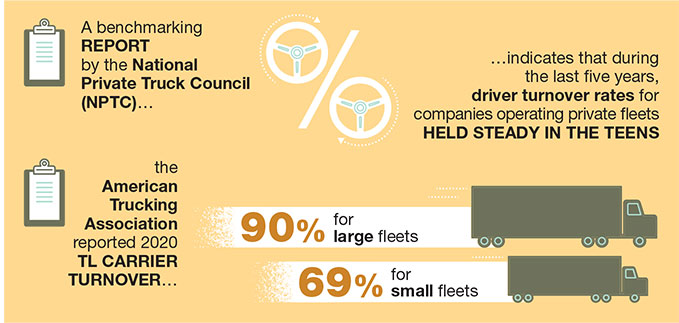
Private fleets offer businesses a significant competitive advantage as it relates to driver job satisfaction and retention. Simply put, drivers who work for private fleets are happier, compensated more holistically and more likely to be satisfied in their jobs than drivers at “for-hire,” third-party delivery partners.
In fact, a benchmarking report completed by the National Private Truck Council (NPTC) indicates that during the last five years, driver turnover rates for companies operating private fleets held steady in the teens, while the American Trucking Association reported 2020 TL carrier turnover at 90% for large fleets and 69% for small fleets.
Many factors contribute to this higher rate of retention, including lower-stress schedules, flexibility to spend more time at home, as well as higher pay. According to NPTC, approximately 71% of private fleet drivers return home every night, with only 15% of private fleet drivers taking multi-night trips.
Furthermore, private fleet drivers historically received higher compensation than for-hire drivers. The 2021 Analysis of the Operational Costs of Trucking conducted by the American Transportation Research Institute (ATRI) found that in 2020, private fleet drivers were paid approximately $1.42 per mile in combined wages and benefits—nearly double “for-hire” combined driver wages and benefits.
Private fleet driver turnover declines slightly
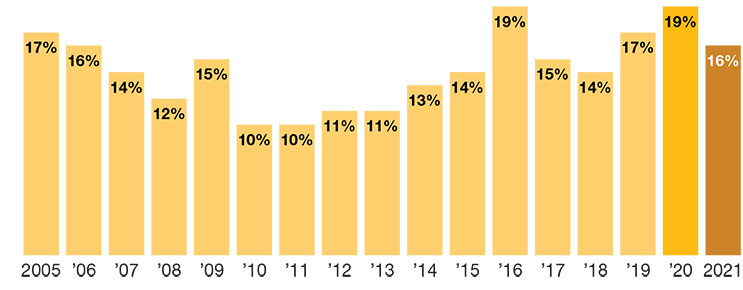
This trend is likely to continue to increase as companies look to build private fleets and keep their drivers happy. For example, Walmart recently announced an increase to driver pay and launched the first-ever Walmart Private Fleet Development Program.
Perhaps most importantly, many companies operating private fleets are giving drivers opportunities to expand their skillsets to contribute to both customer service and business development opportunities. This expansion of the driver’s core job profile offers a much more rewarding and impactful on-the-job experience, putting them quite literally on the front end of revenue generation for the companies they serve.
Average private fleet driver compensation 2008

Source: National Private Truck Council/2021 Benchmark SurveyAverage
Leading the charge
Another major area of value that private fleets offer is the opportunity for direct collaboration with original equipment manufacturers (OEMs) and aftermarket companies—all in an effort to be more sustainable and better stewards of the resources they marshal.
Typical private fleet driver's workweek
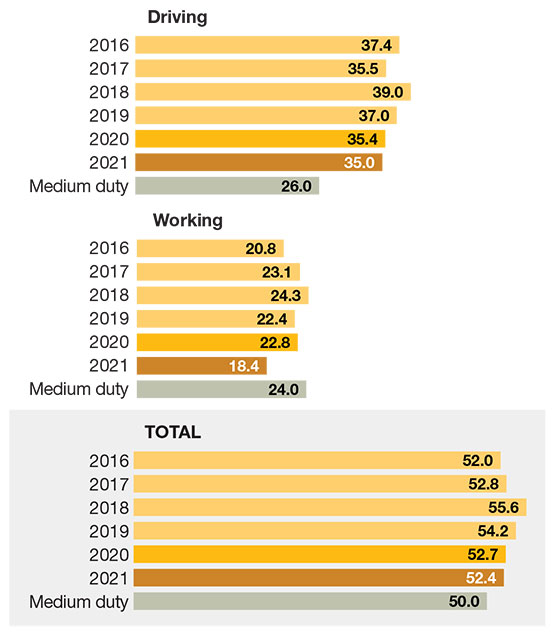
The transition away from fossil fuel-based transport assets toward alternative fuel and electrified platforms is directing the industry to pave new roads and deliver a future that is more sustainable. This gives private fleets a great deal of opportunity to test and pilot new technology, push for new capabilities, and experiment to find the right dynamic mix of assets.
Doing this allows companies to create business value and sustainable impact for their customer and the communities in which they operate—and deliver against the goals and needs of a sustainable future.
Private fleets operators are in a constant state of testing and experimentation, working with mixed fleets and long-range planning to achieve the corporate goals. This gives these companies an advantage as they are setting the “curve” for the industries they serve.
With the world preferences moving faster and faster toward these new platforms, there’s a clear advantage for private fleets to continue to bring this type of innovation forward—leading the race to meet and deliver against an ever-growing set of expectations that drives the customer experience.
Private fleets deliver
Escalating fuel costs, competition for labor, and a world demanding sustainable operations is the reality all companies are faced with today. Private fleet owners that operate with a total cost of ownership mentality see this as another opportunity to lead and set the standards for the industry.
Those that tailor offerings to their customers, improve the overall driver experience and pioneer use of new asset technologies will deliver on a more sustainable future.

Article Topics
3PL News & Resources
XPO opens up three new services acquired through auction of Yellow’s properties and assets FTR’s Trucking Conditions Index weakens, due to fuel price gains LM Podcast Series: Examining the freight railroad and intermodal markets with Tony Hatch Supply Chain Stability Index sees ‘Tremendous Improvement’ in 2023 TD Cowen/AFS Freight presents mixed readings for parcel, LTL, and truckload revenues and rates Descartes March Global Shipping Report highlights ongoing steady volume momentum U.S.-bound import growth track remains promising, notes Port Tracker report More 3PLLatest in Logistics
Warehouse/DC Automation & Technology: Time to gain a competitive advantage The Ultimate WMS Checklist: Find the Perfect Fit Under-21 driver pilot program a bust with fleets as FMCSA seeks changes Diesel back over $4 a gallon; Mideast tensions, other worries cited Four U.S. railroads file challenges against FRA’s two-person crew mandate, says report XPO opens up three new services acquired through auction of Yellow’s properties and assets FTR’s Trucking Conditions Index weakens, due to fuel price gains More LogisticsSubscribe to Logistics Management Magazine

Find out what the world's most innovative companies are doing to improve productivity in their plants and distribution centers.
Start your FREE subscription today.
April 2023 Logistics Management

Latest Resources


